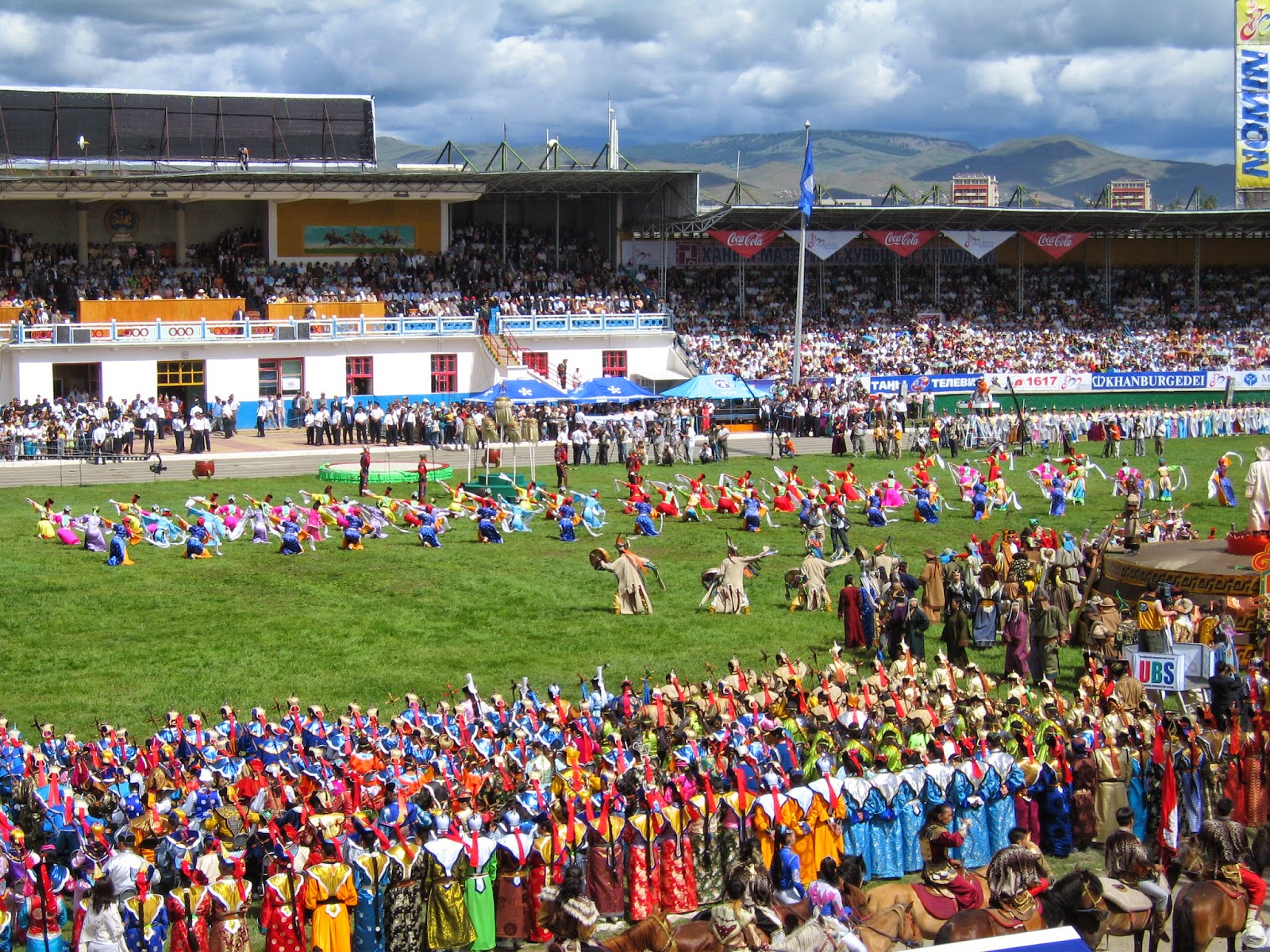One of the largest horse riding nomad civilization will be uncovered in this article !
 |
| A Mongolian Ancient cave painting |
 |
| A Yurt |
The Culture of Mongolia has been heavily influenced by the Mongol nomadic way of life. Other important influences are from Tibet and Tibetan Buddhism, and from China. Since the 20th century, Russian and, via Russia, European culture have had a strong effect on Mongolia.
The ger (yurt) is part of the Mongolian national identity. The Secret History of the Mongols mentions Genghis Khan as the leader of all people who live in felt tents,called gers, and even today a large share of Mongolia's population lives in ger, even in Ulaanbaatar. Ger also means home, and other words are derived from its word stem. For example, gerlekh means to marry.
 |
| A Golden Buddha Statue |
 |
| A Naadam at Ulaan Bataar |
Since ancient times Tengrism was the dominant belief system of the Mongols and still retains significant importance in their mythology. During the era of the Great Khans, Mongolia practiced freedom of worship and is still a defining element of the Mongol character. In the 17th century, Tibetan Buddhism became the dominant religion in Mongolia. Traditional Shamanism was, except in some remote regions, suppressed and marginalized. On the other hand, a number of shamanic practices, like ovoo worshiping, were incorporated into Buddhist liturgy. Since the 1990s, a number of Christian sects are trying to gain a foothold in Mongolia. About 4% of the Mongolian population is Muslim.
Mongolians traditionally were afraid of misfortunes and believe in good and bad omens. Misfortune might be attracted by talking about negative things or by persons that are often talked about. They might also be sent by some malicious shaman enraged by breaking some taboo, like stepping on a yurt's threshold, desecrating waters or mountains, etc.
The most important public festivals are the Naadam (English: game). The biggest one is held each year on July 11–13 in Ulaanbaatar, but there are also smaller ones on aimag and sum levels. A Naadam involves horse racing, wrestling, and archery competitions.
For families, the most important festival is Tsagaan Sar (English: white month), which is roughly equivalent to the Chinese New Year and usually falls into January or February. Family members and friends visit each other, exchange presents - very popular presents for all opportunities are the khadag - and eat huge quantities of buuz. Under the Soviet influence, New Year became a big event, and it is one of the biggest celebrations, comparable to Christmas in the West.
 |
| Sita (White) Tara by Öndör Gegeen Zanabazar. |
The oldest completely passed down work of Mongolian literature is probably also the most well-known abroad: The Secret History of the Mongols. It does, however, contain passages of older poetry. Otherwise, few examples of Mongolian literature from the time of the Mongol Empire have come down in written form: fragments of a song about the mother and the area where one grew up were found in a soldier's grave at the Volga river in 1930, 25 manuscript and block print fragments were found in Turpan in 1902/03, Pyotr Kozlov brought some fragments from Khara-Khoto in 1909.
Before the 20th century, most works of the fine arts in Mongolia had a religious function, and therefore Mongolian fine arts were heavily influenced by religious texts. Thangkas were usually painted or made in applique technique. Bronze sculptures usually showed Buddhist deities. A number of great works are attributed to the first Jebtsundamba Khutuktu, Zanabazar.
 |
| Morin Khuur |
Mongolia has a very old musical tradition. Key traditional elements are throat-singing, the Morin Khuur (horse head fiddle) and other string instruments, and several types of songs. Mongolian melodies are typically characterized by pentatonic harmonies and long end notes.
The Mongolian cuisine is primarily based on meat and dairy products, with some regional variations. The most common meat is mutton, supplemented in the desert south by camel meat, and in the northern mountains by beef (including yak). Dairy products are made from mare's milk (Airag), from cattle, yaks, and camels (e.g. clotted cream). Popular dishes include buuz (a type of meat dumpling), khuushuur (a meat pastry), khorkhog (a meat stew, usually a special meal for guests), and boortsog (a sweet biscuit). The meal commonly known as Mongolian barbecue is not Mongolian at all, but Taiwanese in origin.
 |
| A Mongolian Traditional Dress |
It's usually has a bright color, consisting of red, blue, green and yellow
Popular board games are chess and checkers. The chess figures are noyon (noble = king), bers (cp. bars "tiger" = queen), temee (camel = bishop), mori (horse = knight), tereg (cart = castle), khüü (boy = pawn). The rules used today are the same as in European chess.
Thanks for reading my Blog !








0 komentar:
Post a Comment